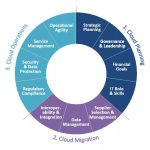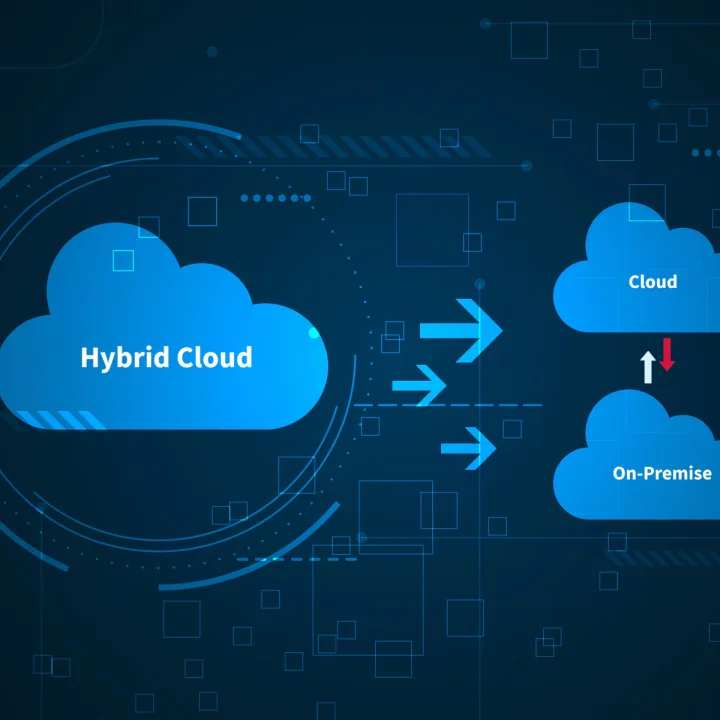


How It Works
Our Cloud Readiness Assessment is a comprehensive evaluation of an organization’s existing IT infrastructure, applications, and processes to determine its suitability for migration to the cloud. The goal is to identify potential challenges, risks, and opportunities associated with moving to the cloud and to develop a strategic roadmap for a successful transition. Here is a general process used to undertake a Cloud Readiness Assessment for a client’s infrastructure:
1. Define Objectives and Scope:
- Objective: Clearly define the goals and objectives of the Cloud Readiness Assessment.
- Activities:
- Identify the specific reasons for considering cloud adoption (e.g., cost optimization, scalability, agility).
- Define the scope of the assessment, including the systems, applications, and processes to be evaluated.
2. Stakeholder Engagement:
- Objective: Engage key stakeholders to gather insights and understand business requirements.
- Activities:
- Conduct interviews with IT leaders, business executives, and other relevant stakeholders.
- Gather information about business goals, regulatory requirements, and expectations regarding cloud adoption.
3. Inventory and Application Mapping:
- Objective: Create an inventory of existing IT assets and map dependencies between applications and services.
- Activities:
- Identify and document current infrastructure components, including servers, storage, networking, and applications.
- Map interdependencies between applications, data, and infrastructure.
4. Assessment of Current Environment:
- Objective: Evaluate the current state of the IT environment in terms of performance, security, and compliance.
- Activities:
- Assess the performance of existing systems and applications.
- Evaluate security measures, compliance with regulations, and data governance practices.
5. Cloud Service Model and Deployment Model Selection:
- Objective: Determine the most suitable cloud service and deployment models based on business requirements.
- Activities:
- Assess the benefits and considerations of Infrastructure as a Service (IaaS), Platform as a Service (PaaS), and Software as a Service (SaaS).
- Evaluate the appropriateness of public, private, hybrid, or multi-cloud deployment models.
6. Risk and Compliance Analysis:
- Objective: Identify potential risks and ensure compliance with industry standards and regulations.
- Activities:
- Conduct a risk assessment to identify security, data privacy, and compliance risks associated with cloud adoption.
- Ensure alignment with regulatory requirements relevant to the industry.
7. Cost Analysis and TCO Calculation:
- Objective: Estimate the costs associated with cloud adoption and calculate the Total Cost of Ownership (TCO).
- Activities:
- Analyze the cost implications of migrating existing systems to the cloud.
- Consider factors such as infrastructure costs, licensing, data transfer, and ongoing operational expenses.
8. Performance and Scalability Assessment:
- Objective: Evaluate the performance and scalability of applications in a cloud environment.
- Activities:
- Assess how well applications can scale in response to changes in demand.
- Consider the impact of cloud-native features on performance.
9. Skills and Training Assessment:
- Objective: Assess the skills and training requirements for IT teams to manage cloud-based environments.
- Activities:
- Evaluate the existing skill set of IT staff.
- Identify training needs and opportunities for upskilling.
10. Business Continuity and Disaster Recovery Planning:
- Objective: Develop strategies for business continuity and disaster recovery in the cloud.
- Activities:
- Assess existing business continuity and disaster recovery plans.
- Define cloud-specific strategies for backup, recovery, and continuity.
11. Roadmap and Recommendations:
- Objective: Develop a roadmap for cloud adoption with actionable recommendations.
- Activities:
- Consolidate findings and present a detailed analysis of the Cloud Readiness Assessment.
- Provide recommendations for migration strategies, prioritized actions, and a timeline for implementation.
12. Documentation and Reporting:
- Objective: Document all findings and present a comprehensive report.
- Activities:
- Prepare a detailed report that includes the assessment methodology, findings, recommendations, and a clear action plan.
- Share the report with key stakeholders and seek feedback.
13. Feedback and Iteration:
- Objective: Collect feedback from stakeholders and iterate on the assessment as needed.
- Activities:
- Engage stakeholders to gather feedback on the assessment process and recommendations.
- Incorporate feedback into the final assessment report.
14. Implementation Support:
- Objective: Provide support during the initial stages of cloud adoption.
- Activities:
- Offer guidance and support during the initial phases of migration.
- Monitor the implementation and address any issues that may arise.
By following this process, organizations can gain valuable insights into the feasibility and implications of moving to the cloud. The Cloud Readiness Assessment serves as a foundation for making informed decisions, mitigating risks, and ensuring a successful transition to the cloud.


